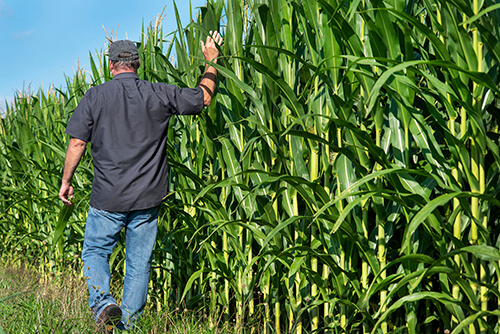Time for field evaluation
Aug 24, 2020

It isn’t news 2020 has been a year with many challenges. With the row crop finish line fast approaching, corn will be harvested soon and soybeans are receiving their fungicide application that should carry them through pod fill. Everyone is itching to begin harvest season because, as farmers, this is what we have waited for all year, regardless the outcome. We can’t wait to see what yield this year’s crop will bring.
One thing to keep in mind, this time of the season is an excellent time to evaluate a field. So, we can continue strategies that are working or make changes to improve for next year. Here are some suggestions for you to evaluate for next season.
These are just a few things to look at as there are many variables that effect yield of a crop. Talk to your local Co-op or agronomist about troublesome fields on your farm. Hopefully with the correct changes over time, the yield in these struggling areas will improve.
One thing to keep in mind, this time of the season is an excellent time to evaluate a field. So, we can continue strategies that are working or make changes to improve for next year. Here are some suggestions for you to evaluate for next season.
- Look for spots in the field that may be struggling. If you don’t have a current soil sample be sure to mark the area and pull one this fall.
- If your field is planted in soybeans, nematodes could be a possibility. The best time to pull a nematode sample is at harvest, preferably before it gets to cold.
- For corn in weaker areas, dig up plants and check planting depth then look for side wall compaction.
- Check weed control as palmer amaranth and water hemp have become a problem in much of our territory. If you don’t have any palmer start putting down residuals so hopefully when it does show up it will be much smaller issue.
- Pick a herbicide platform that works for your operation. Remember while these traits add a tool to your toolbox, don’t plan on them being your only line of defense against palmer. Many palmers escape an application because they were too tall.
- Pre-emergence group 15 herbicides are the best option for controlling pigweed because once emerged they can grow three inches a day making timing spray application tough. Add a group 15 herbicide at planting and set a date three weeks after planting and plan on making another application.
- Most residual herbicides will last longer than three weeks depending on how much rain you receive, but don’t wait for weeds to emerge. As the old saying goes “an ounce of prevention is worth a pound of cure.” When dealing with palmer, keeping it from emerging is the only way to win the game.
- Another option for weak areas may be to plant a different variety in these areas so look at hybrids that may have a better stress tolerance.
These are just a few things to look at as there are many variables that effect yield of a crop. Talk to your local Co-op or agronomist about troublesome fields on your farm. Hopefully with the correct changes over time, the yield in these struggling areas will improve.